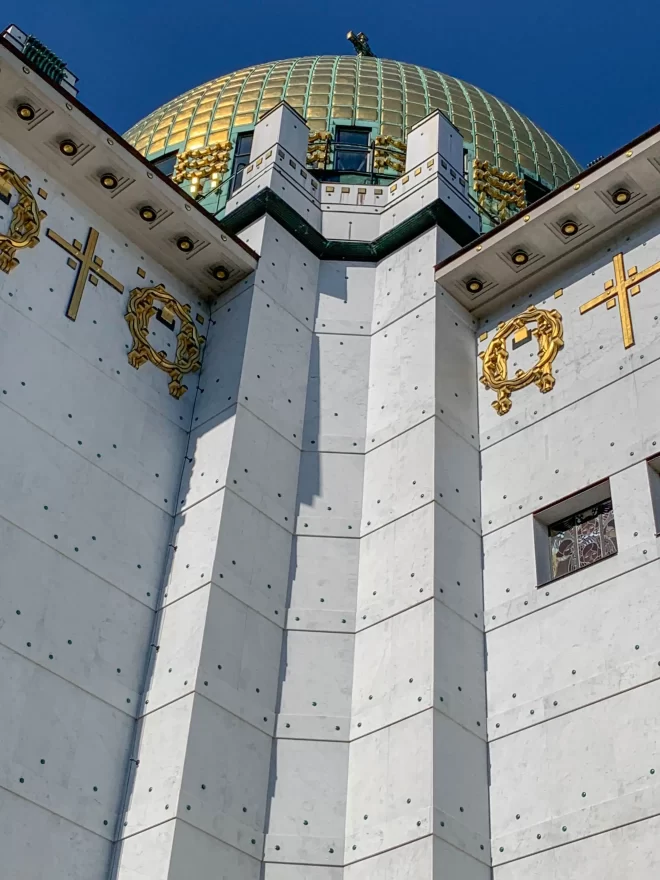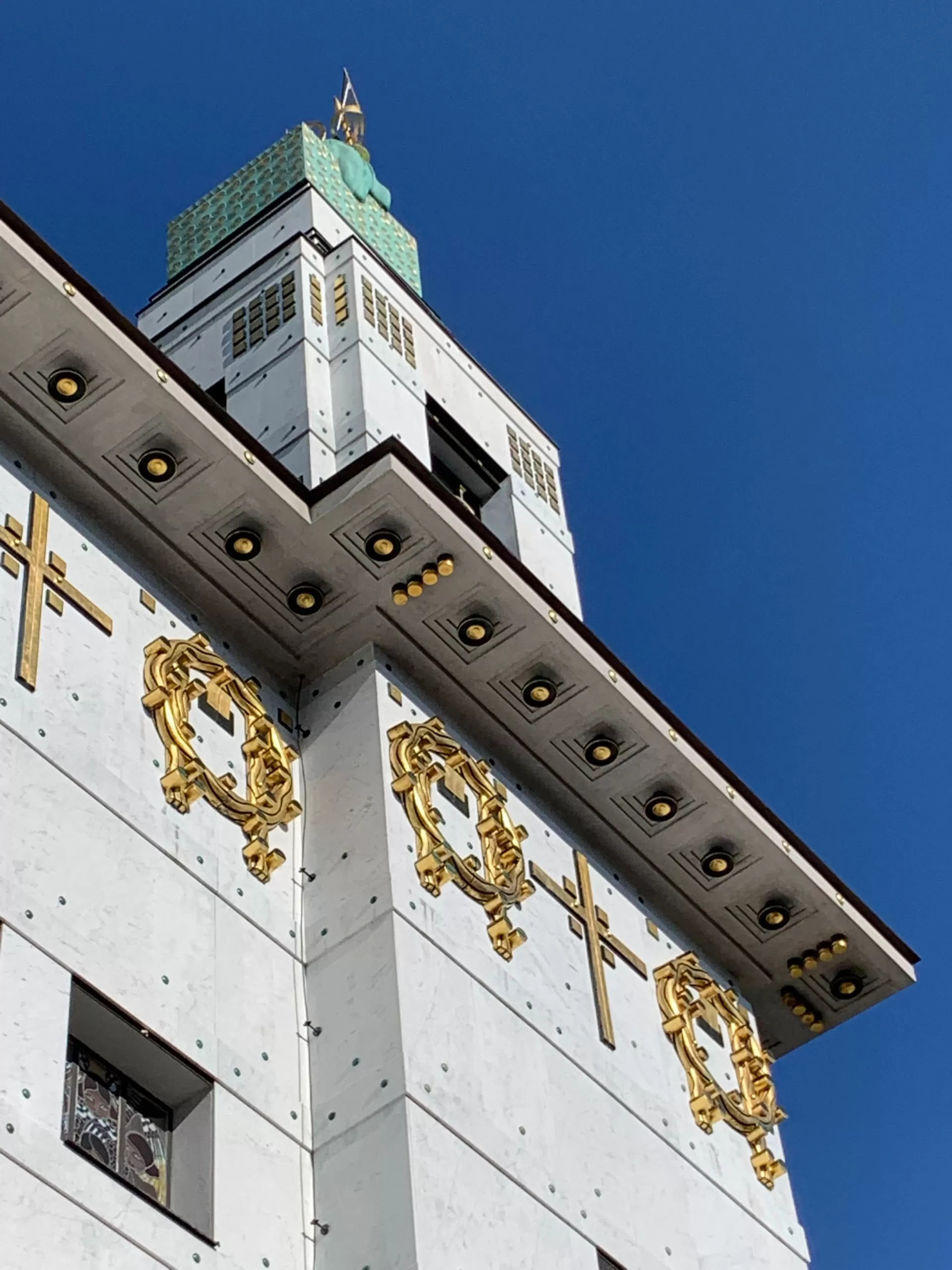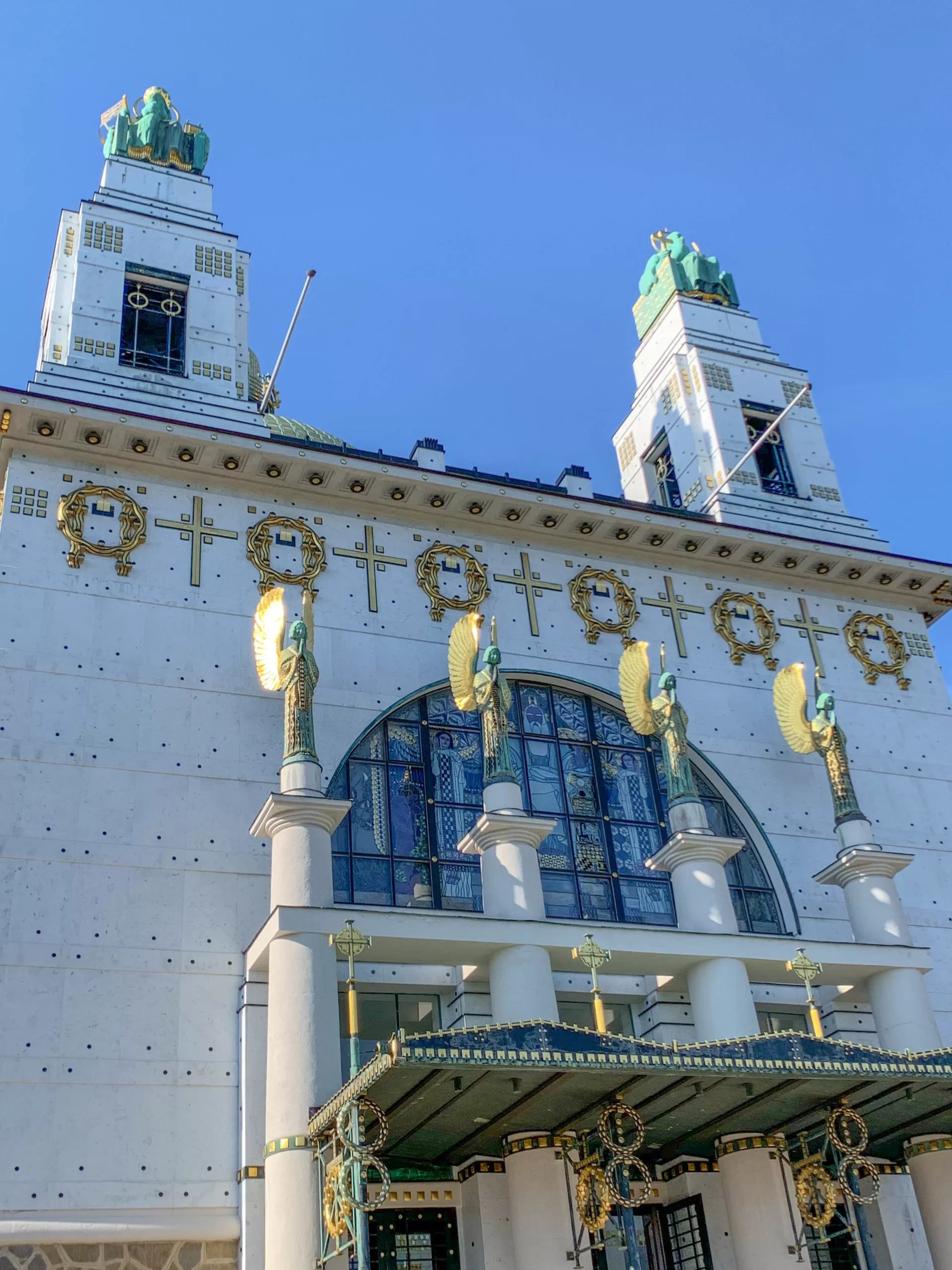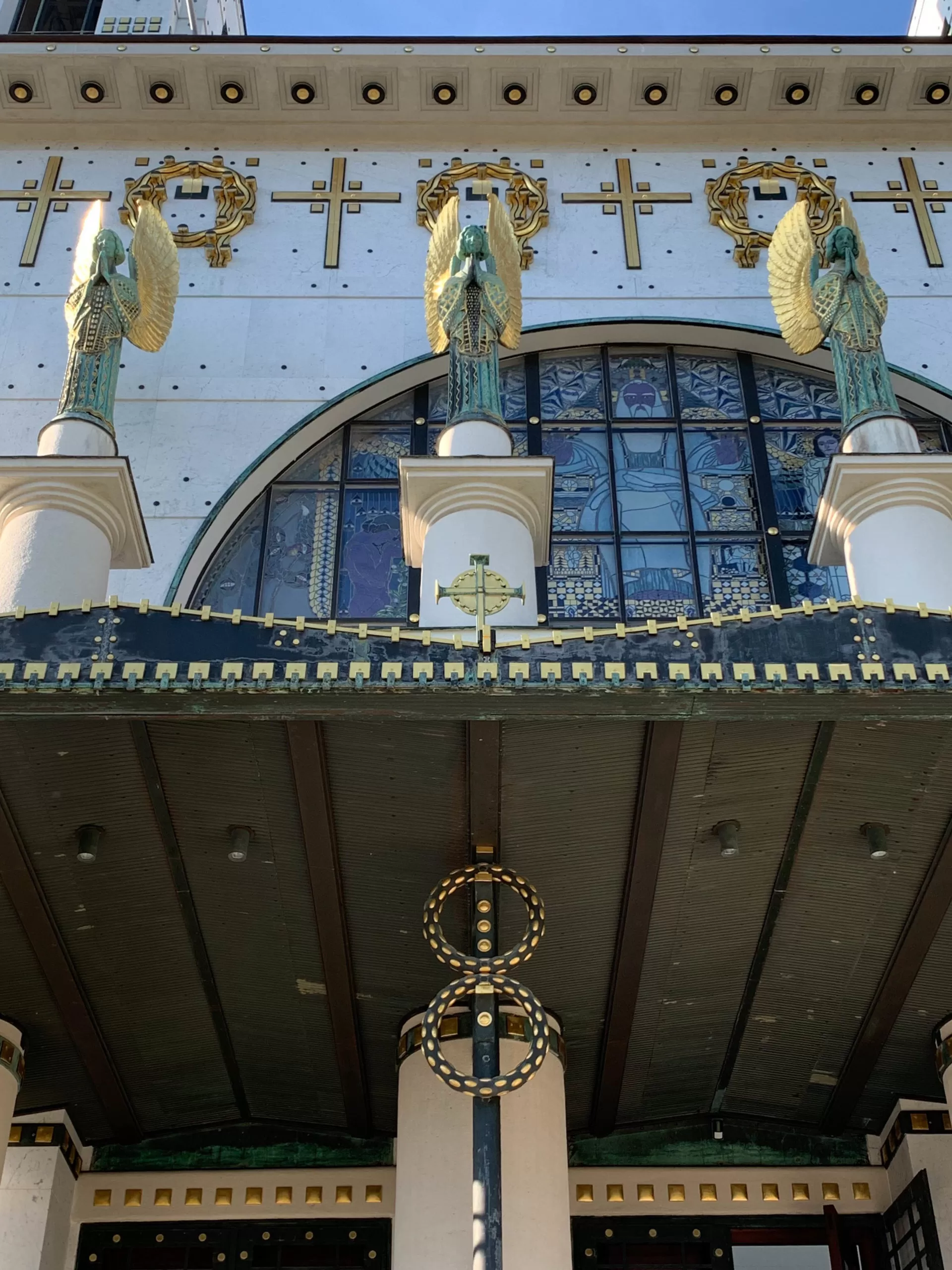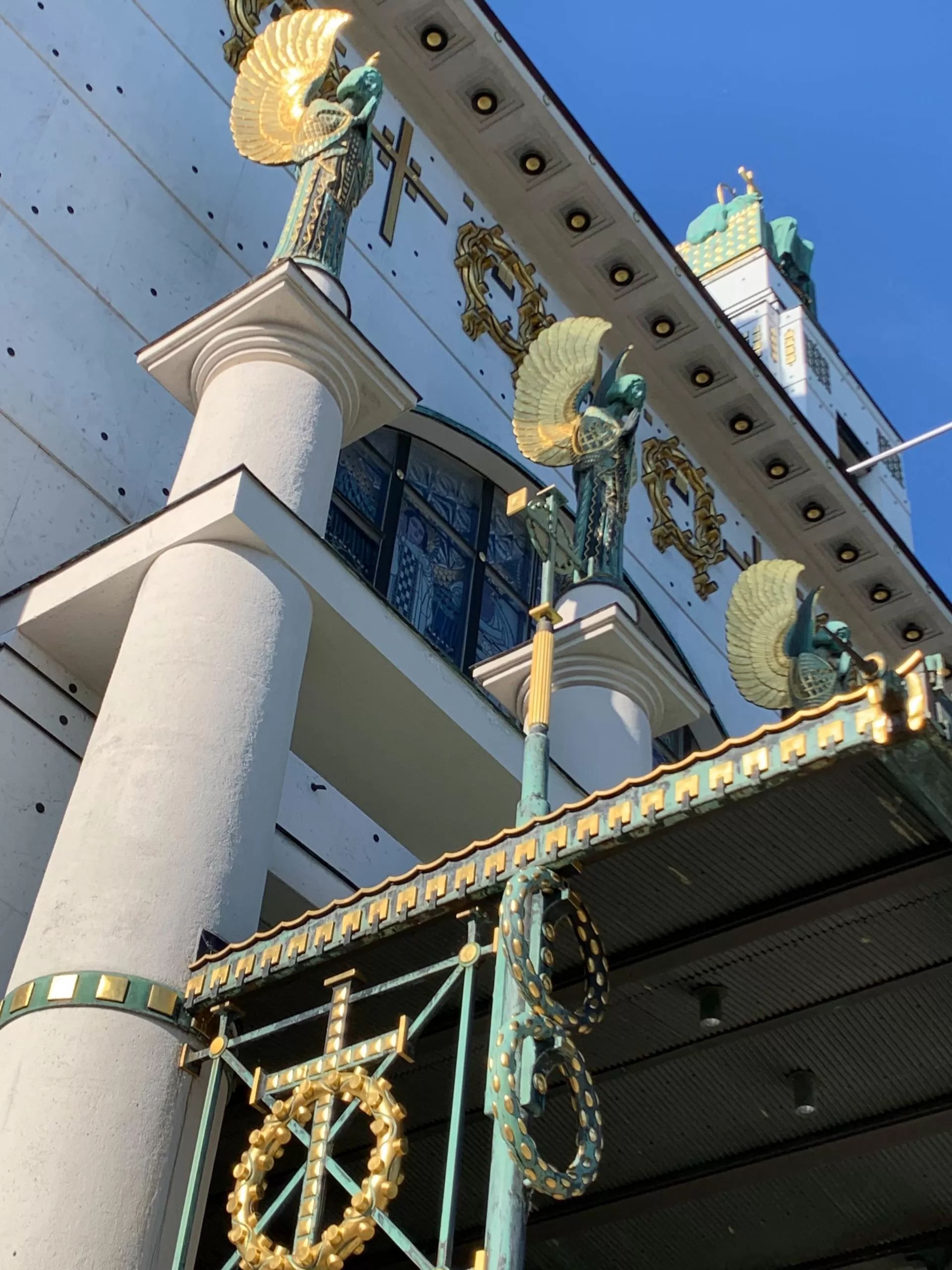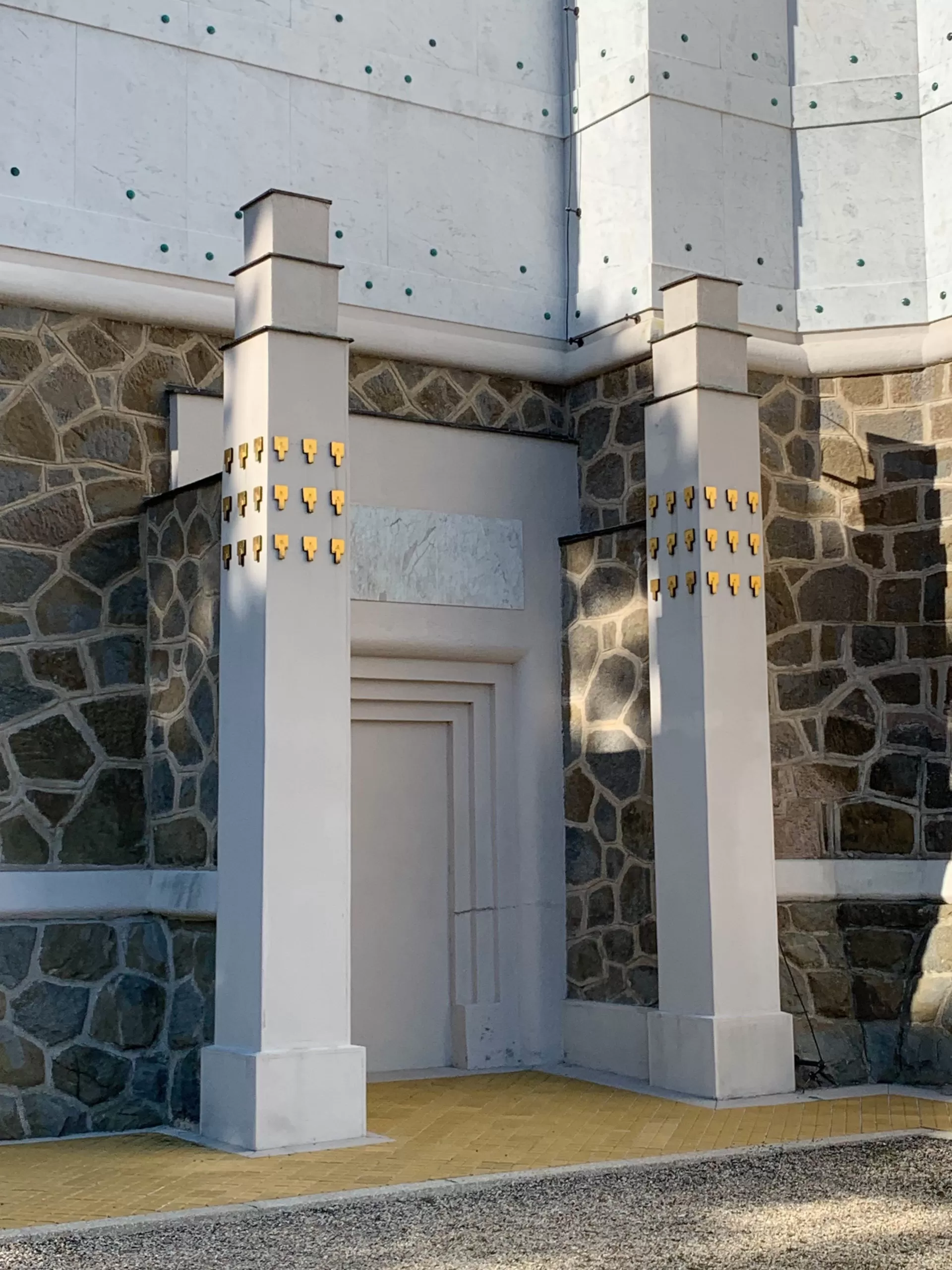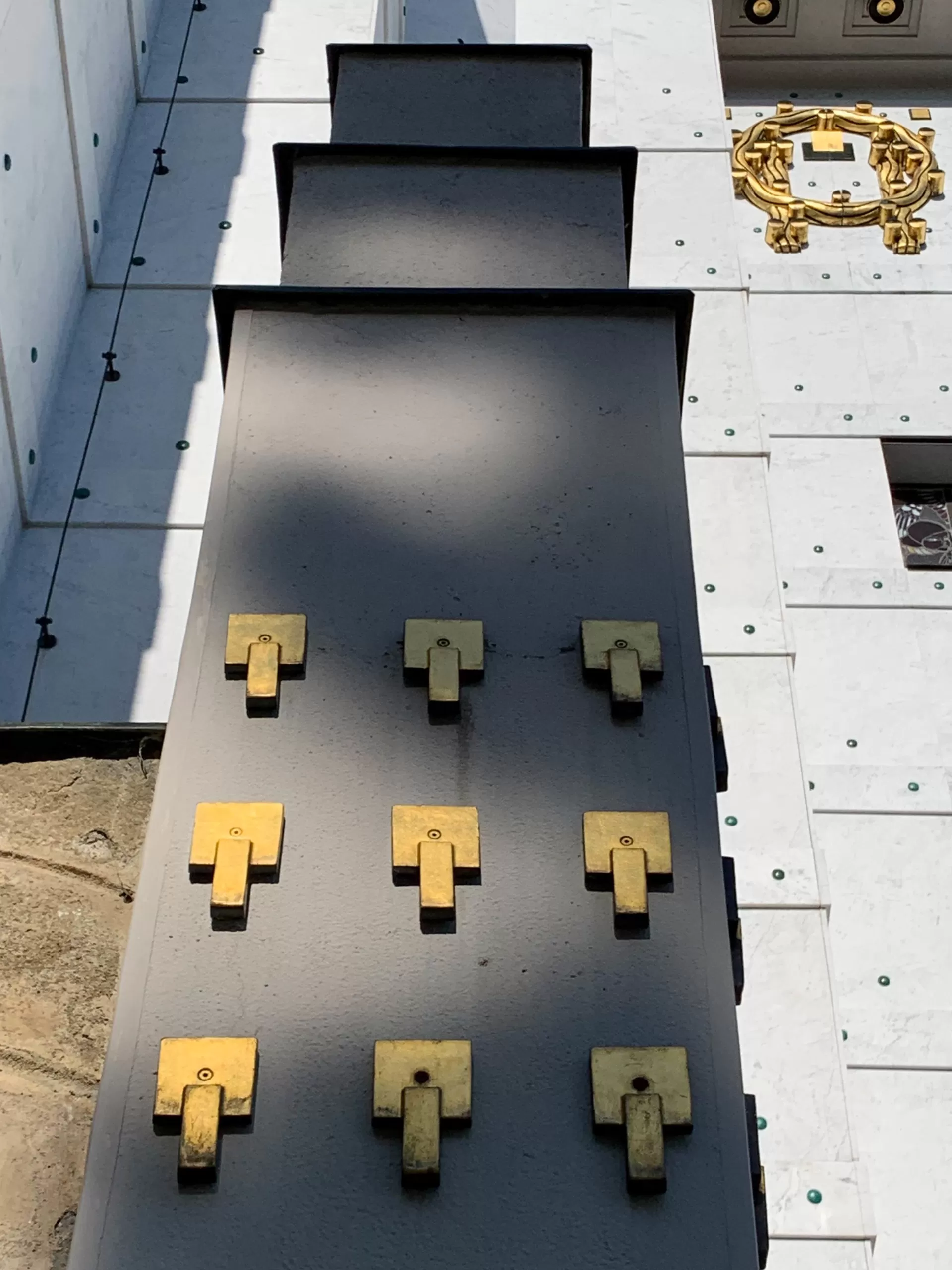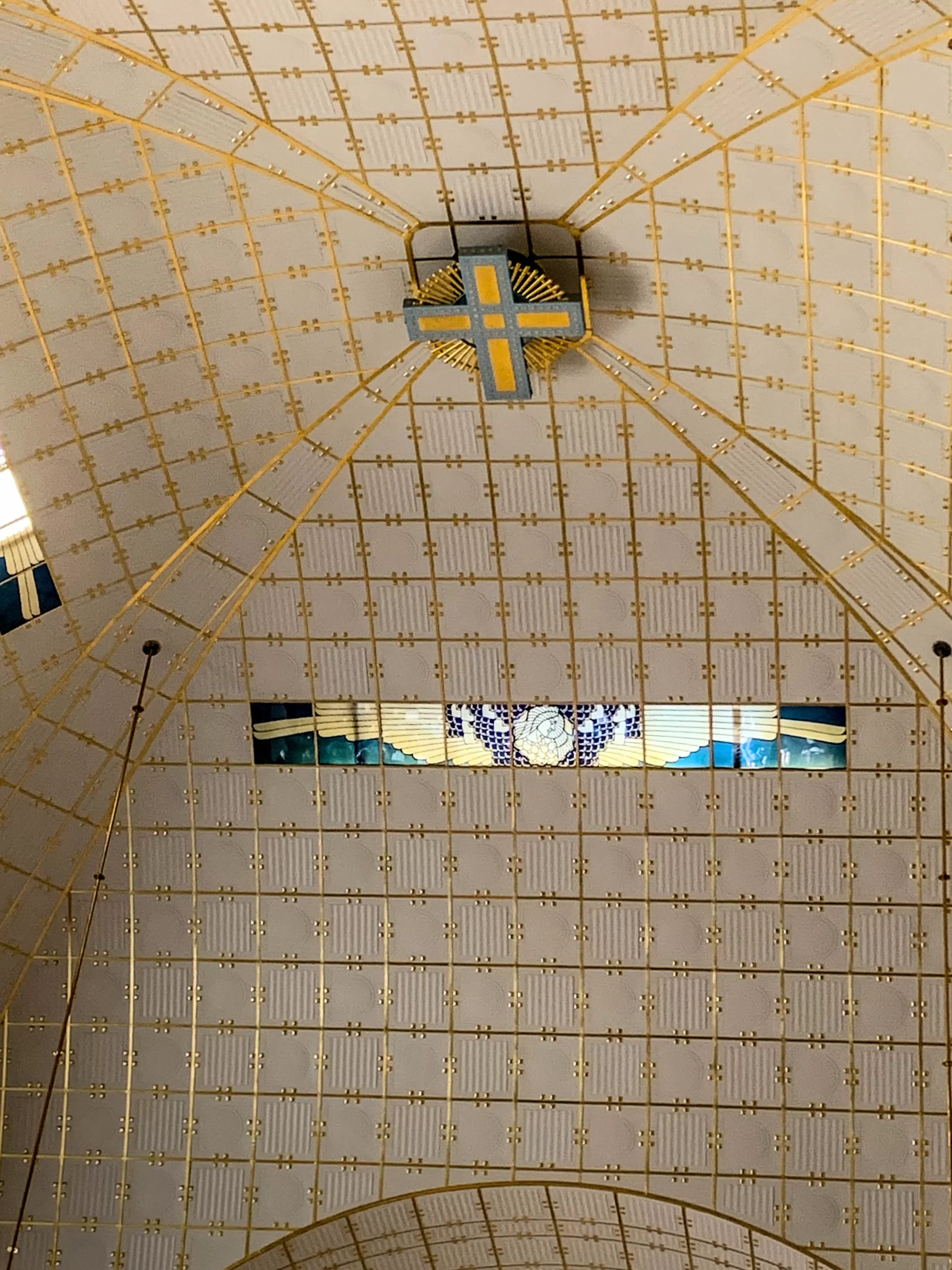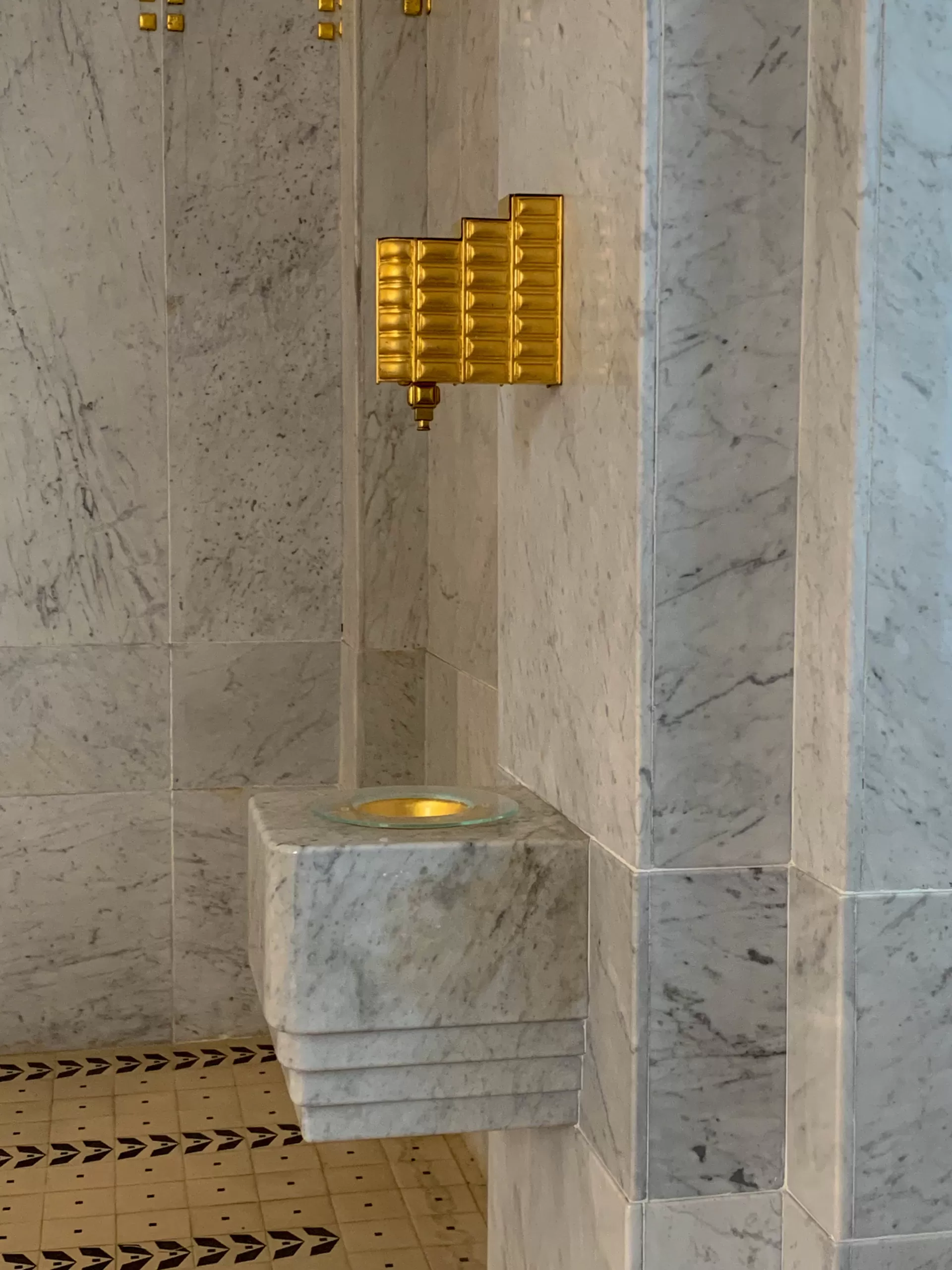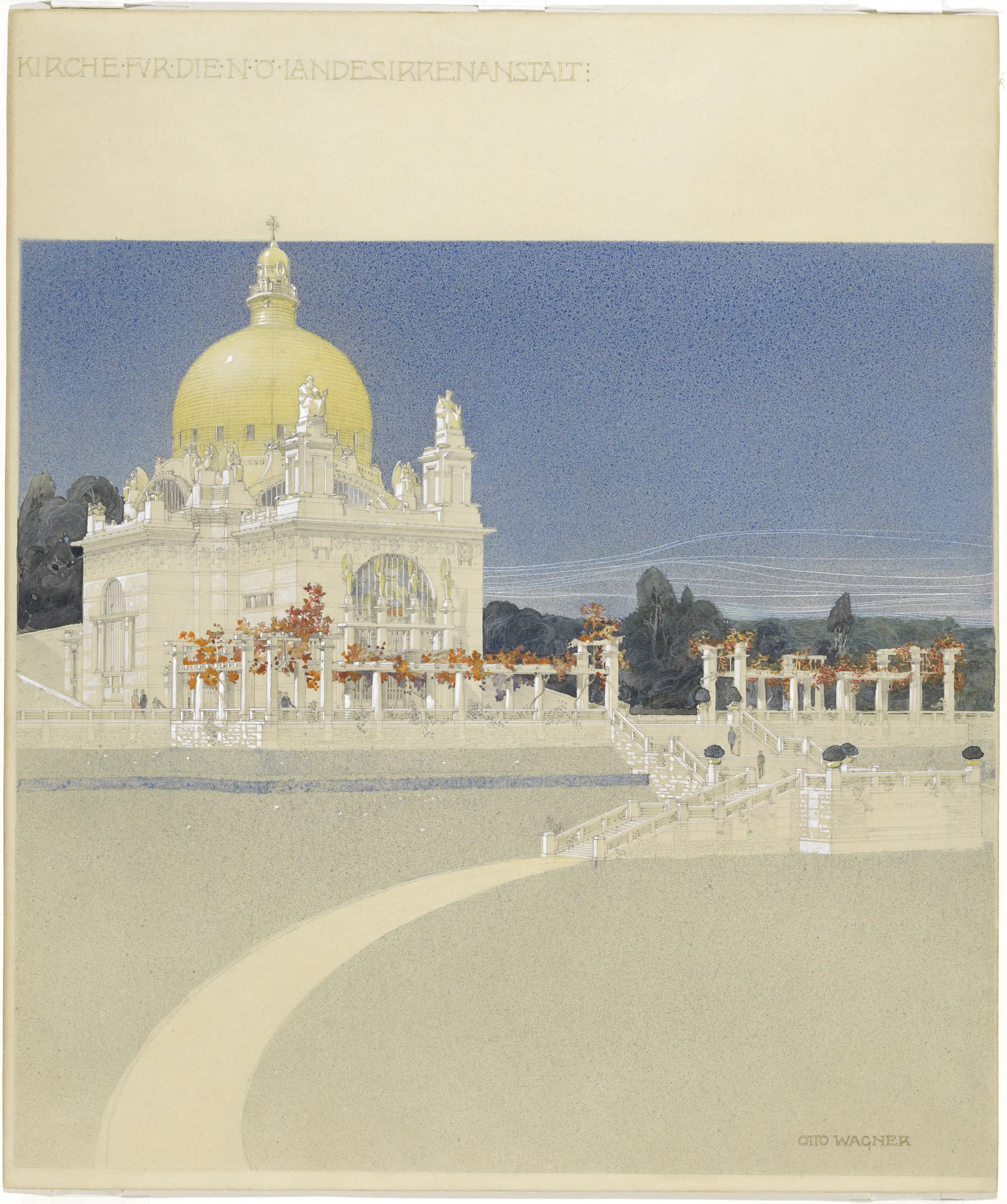
Otto Wagner, Kirche am Steinhof, competition project, perspective, 1902–1903, Vienna Museum Inv. No. 96011/2
1904 – 1907
Architect: Otto Wagner
Baumgartner Höhe 1, Vienna, Austria
The Catholic church in the Penzing district of Vienna, also known as the Otto Wagner Church, was built between 1904 and 1907 based on designs by architect Otto Wagner.
Considered one of the most important examples of Viennese Art Nouveau, it was built as part of the Lower Austrian Provincial Hospital for the Mentally and Nervously Ill at Steinhof, now known as the Otto Wagner Hospital.
Competition
In 1902, Otto Wagner won the competition to design St. Leopold’s Church at the Lower Austrian Provincial Mental Hospital in Steinhof.
However, Wagner was only entrusted with the construction of the church in the overall design for the 100-hectare site. At the beginning of 1903, the professor from the Vienna Academy of Fine Arts, the senior civil engineer of Vienna, and a leading figure of the Vienna Secession movement had to make a few changes to the project.
Two years later, on October 18, 1904, his design was approved. On June 6, 1905, the groundbreaking ceremony took place.
With the help of architects Otto Schönthal and Marcel Kammerer, construction of the church was completed by October 5, 1907. Construction costs amounted to 575,000 crowns, and Wagner’s fee was 35,500 crowns.
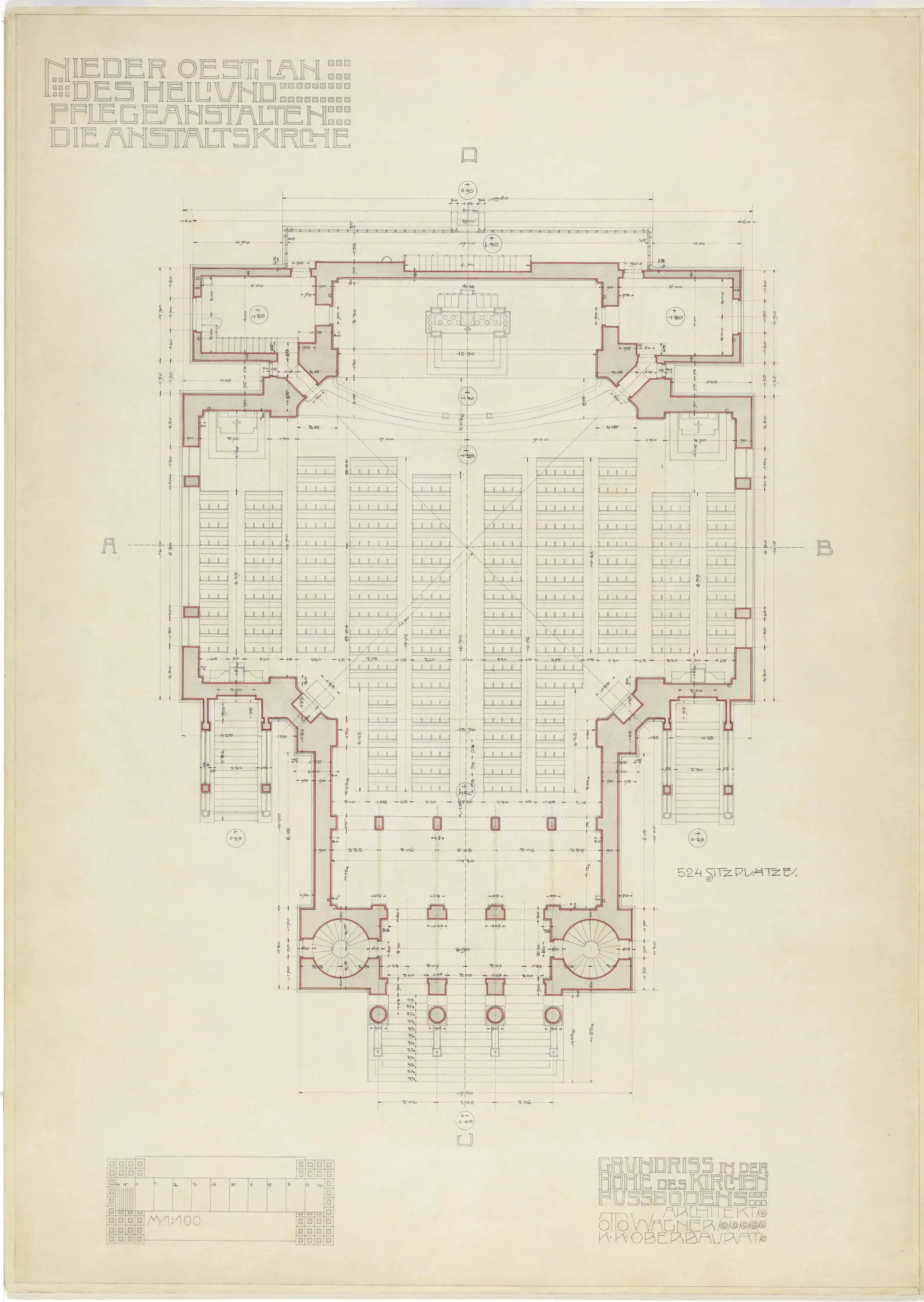
Otto Wagner, Am Steinhof Church, floor plan at church floor level, 1903–1904, Vienna Museum Inv. No. 96011/20
Modernism in Church Architecture
As early as 1899, Otto Wagner reflected on the concept of modern sacred buildings in his text, “Modernism in Church Architecture.” He presented his concept in greater detail in the publication Explanations on the Completion of the Church of the Lower Austrian Provincial Sanatorium and Nursing Home.
His contemporaries took issue with his concept, which emphasized light, air, hygiene, practicality, comfort, and toilet facilities. The building was designed using reinforced concrete, copper, glass, and marble slabs.
The church authorities were skeptical from the beginning and raised numerous objections. “You can’t imagine what I’m going through,” Wagner wrote to his friend Koloman Moser in 1905.
Construction
The church is located on the grounds of the Baumgartner Höhe Social Medical Center in Vienna’s Penzing district. Since 2020, it has been part of the newly built Penzing Clinic.
The church has a Latin cross floor plan. The brickwork is clad with 2-cm-thick Carrara marble slabs, each of which is anchored to the brick core with two copper bolts. A total of 4,211 bolts were used. The copper knobs serve as both fasteners and decorative elements.
Rising above it is the hemispherical dome, covered with gilded copper plates, which reaches a height of 51 meters. A lantern with a cross sits atop the dome.
Windows and Dome
The stained glass windows were designed by Koloman Moser and executed by Leopold Forstner.
The western window bears the motto, “Truly I tell you, whatever you did for one of the least of these brothers of mine, you did for me,” and depicts the cardinal virtues..
The eastern window, bearing the motto “Blessed are the merciful, for they shall obtain mercy,” depicts the spiritual virtues.
The most striking feature of the church is its gilded dome. In front of the bell towers, are statues of St. Leopold and the preacher Severin, designed by the sculptor Richard Luksch.
Below the cornice is a decorative strip with crosses and laurel wreaths, a common feature in Otto Wagner’s buildings, such as the Postsparkasse and the cast-iron city railway railings. Above the main entrance to the church square, there are four angel figures with bowed heads created by Othmar Schimkowitz.
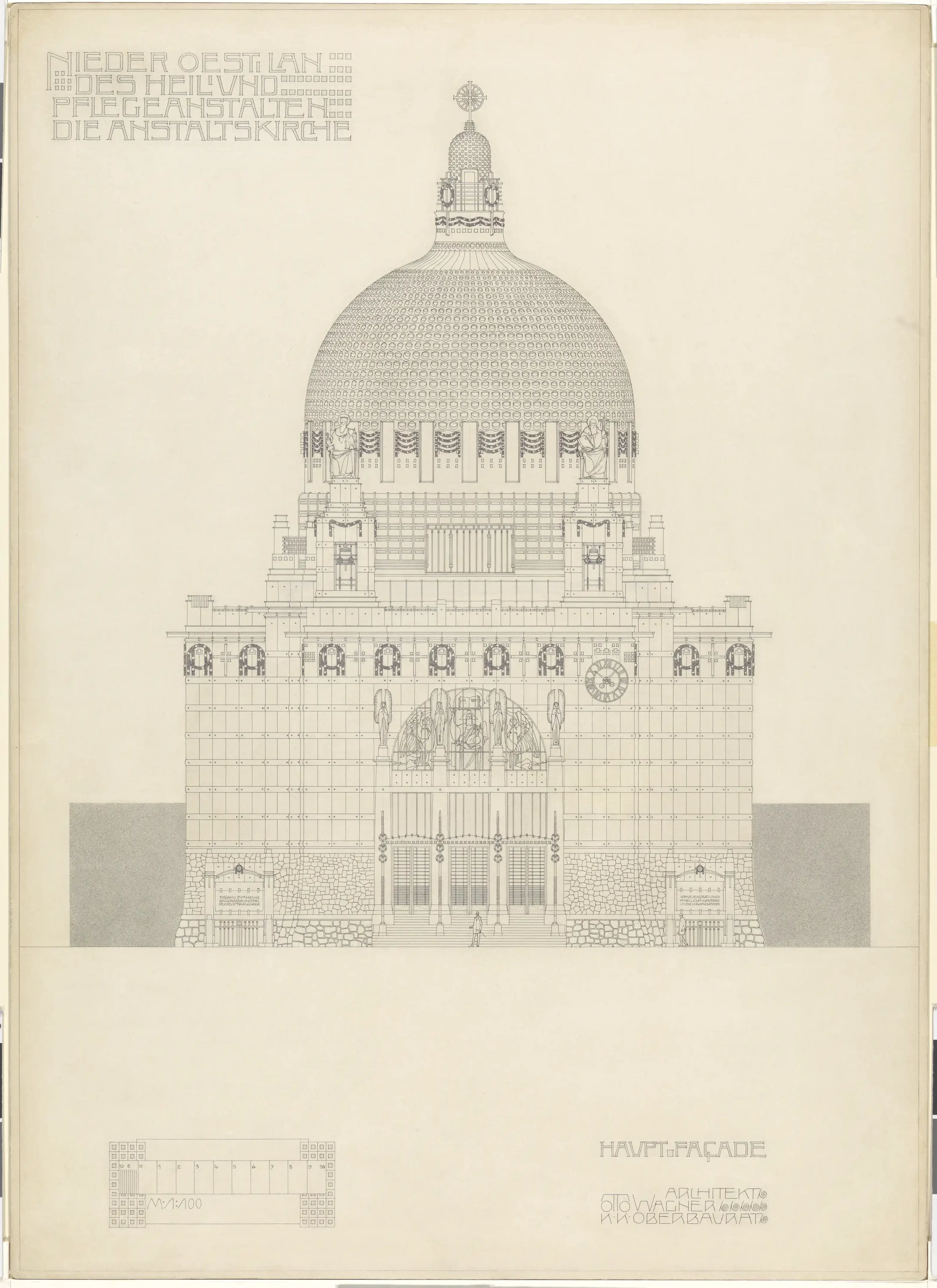
Otto Wagner, Am Steinhof Church, main façade, elevation, 1903–1904, Vienna Museum Collection Inv. No. 96011/15
Interior
Even the smallest details of the interior of the church, which was used as part of a psychiatric clinic, were subjected to Otto Wagner‘s principle of utility.
The beauty, magnificent furnishings, and cheerfulness were intended to provide patients with a liberating experience.
Hard edges were avoided to prevent injury. The rows of benches were shortened to allow easier access to patients.
The tiled floor slopes slightly to make cleaning easier. The holy water fonts are equipped with running water to prevent infection.
Color was used sparingly inside the church and concentrated on the altar and windows.
The 84.83-square-meter altar wall, completed in July 1913 by Leopold Forstner based on a design by Remigius Geyling, uses an opaque mosaic technique.

Otto Wagner, Am Steinhof Church, High Altar, Perspective, 1903–1904, Vienna Museum Inv. No. 96011/3
Renovation
The City of Vienna has owned the church since 1920. Until the 1990s, the building fell into disrepair.
After approximately six years of renovation work, the church reopened on October 1, 2006.
During this time, the dome was regilded with two kilograms of gold leaf, the tambour base was renewed with copper sheets artificially patinated to look aged, and the Carrara marble façade was completely replaced.
The windows, mosaics, and figures were carefully cleaned and restored. Additionally, the people’s altar and ambo were rebuilt.
Thanks to its golden dome, which shines in new splendor and resembles half a lemon when viewed from afar, the hill on which the church is located, Baumgartner Höhe, received the nicknames Lemoniberg and Limoniberg.

